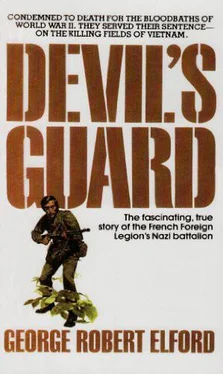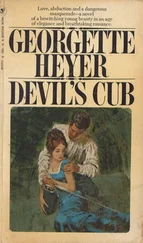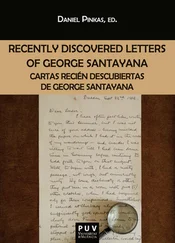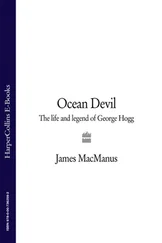Some three miles from the river the forest ended abruptly and we found ourselves on the edge of an open slope leading up to the crest of Hill 124, our first objective. According to the aerial photos, Hill 124 dominated the valley in which Captain Lorilleaux and his battalion had been slaughtered to the last man. We took possession of the crest and left behind a platoon under the command of Corporal Karl Stolz. We pushed on toward our second and third objectives, Hills 125 and 126. The guns and ammo seemed to have doubled in weight and I felt sorry for Riedl’s group, struggling somewhere in the opposite hills. They were transporting the heaviest MG’s and the dismantled 4 CM rifles along with the shells.
Another two miles and we arrived at the crest of Hill 125. A few dim lights of the distant village could be seen. The valley, where over a thousand Viet Minh must have been waiting for us to come across the bridge, lay in darkness. The night was warm and we perspired profusely as we labored higher and higher on the slope. We kept carefully on the far side of the crest, so that we could not be spotted as a long line of dark shapes, moving against the background of the moonlit skies. I called a brief halt and scanned the silvery panorama down below through binoculars. I wished that I had a way of knowing how Pfirstenhammer and Riedl were progressing some five miles away on the far side of the valley. And I missed Erich Schulze, who had been wounded slightly in the hip the week before and had been confined to his bed for another week.
Leaving thirty men with MG’s and mortars behind, I took my remaining fifty troops to Hill 126, which rose eight hundred feet above the village half a mile away. It was 3 A.M. and there was perceptible lightening of the eastern horizon. The moon hung low above the hills and I could just make out a number of long thatched buildings and huts. Beyond the village lay another chain of undulating hills, densely forested with gentle downward slopes into the valley and the settlement. I could see the dim, whitish ribbon of the narrow road that ran through the village toward Neua in the west.
Having deployed my men on the hill, I sent fifteen men to link up with a similar patrol from Group Two to sever the road to Neua a mile beyond the village. Shortly after four o’clock the patrols established contact. Encirclement was complete. Riedl and Pfirstenhammer were in control of Hills 127 and 128 on the far side of the valley. At 4:25 A.M., Eisner sent a radio message. He was across the bridge and under intense enemy fire.
Then everything began to run with the precision of good clockwork. Our yellow Very lights were instantly answered from every hill, and it began to rain fire and steel. We opened up on the village with everything we had. Where only moments before utter silence prevailed now hundreds of projectiles, mortar shells, and incendiaries were shrieking downward, blasting the road, the huts, the water tanks, turning wood and bamboo into a sea of rising flames. There were about two hundred huts in the village and every one of them seemed to become the focal point of intermittent lines of converging tracers. , We could see knots of people as they emerged from the huts, running in every direction in the futile hope of finding a way out of the sudden holocaust. Six minutes later, Eisner called again. The guerrillas were falling back in the valley.
“Now it’s beginning to look like the blitzkrieg in Poland,” Bernard remarked. “But in the nick of time, Hans!” I could sense sadness in his voice. “What’s wrong?” I asked.
“We lost thirty-two men,” he replied quietly.
It was a heavy loss.
Dawn came slowly like the gradual illumination of a stage in the darkness; a repulsive stage with bodies sprawling on the streets, in the doorways, even out in the fields. The survivors ran amuck amidst the bursting shells and flickering tracers, only to be mowed down a few seconds later. From the valley, massive groups of the withdrawing Viet Minh began to emerge. Shooting in every direction, the enemy was moving toward the village. There were over a thousand of them, still armed, still fighting but already doomed. They had no place to withdraw, and encirclement had always been a German specialty. Under the cover of machine guns and flamethrowers, Pfirstenhammer’s platoons were entering the village, burning and blasting everything that still stood. The sun rose higher, sending its first rays into the valley from which came cries of agony and frustration; yells, curses, and explosions echoed back and forth between the cliffs. About two hundred guerrillas had tried to storm Hill 125, which was defended by only twenty troopers. But those twenty had twelve machine guns. Pivoting their guns from left to right, then back again, the platoon took a terrible toll among the exposed enemy.
Once again Eisner called. He had found the badly decomposed and horribly mutilated corpses of at least four hundred French troops strewn all over the valley, hanging disemboweled from the trees, the rocks. Many of the corpses were headless and castrated. The heads had been neatly arranged along the road like a row of macabre milestones. Only they indicated yards, not miles—only yards! This was to be the terrorist reception for us! The mortars and the two 4 CM rifles were turned on the guerrillas now milling in the narrow depression, seeking a way out of the deadly trap. The acrid fumes of cordite hung heavily over the woods, and as the machine guns chattered I could see a dozen men pitching from the rocks, rolling down the slope, dead or dying. Men with legs or arms shot to shreds or with their clothes on fire were tumbling down on top of those who had fallen before. Under the cover of the MG’s and the flamethrowers Pfirstenhammer began to advance. Moving from rock to rock, from crevasse to crevasse, his troopers were burning everything and everyone. Descending slowly on the eastern slope, Riedl’s detachment sealed the trap.
Dominating every hill, we proceeded systematically to exterminate the guerrillas. We spared only small children and women. Everybody taller than four feet was gunned down or burned to ashes. Our aim was not to cause casualties but to exterminate; gaining territory was of little importance to us. We could not hold an inch of land for any length of time. The destruction of the enemy manpower was our principal aim. We gunned down every man in sight regardless of whether he carried a weapon or not. They all belonged to the same snake pit. And if they were among the guerrillas we shot down twelve-year-old boys, too. We regarded them as the terrorists of the coming years. The golden reserve of Ho Chi Minh! The battle lasted for about three hours. The surviving four hundred Viet Minh, most of them wounded, finally surrendered. They should have known better. About a hundred of them, captured by Pfirstenhammer higher up in the hills, were taken to a jutting precipice and cast down one after another. “They aren’t worth the bullets,” Karl commented.
The captured company commanders, propagandists, commissars, and platoon leaders who were directly responsible for the massacre and mutilation of the French battalion were executed by what Eisner called “shooting to bits.”
The victim’s fingers were shot away one by one. His nose and ears followed; then slugs were fired into their kneecaps and feet. Throughout the process no vital organ was hit and the guerrilla leader was left to die by bleeding.
It was not a senseless act of brutality. It was tit for tat. We wanted to plant such terror in their hearts that they would run, head over heels, when they heard us coming.
Sparing but fifty of the prisoners, we lined them all up against the rocks, facing a dozen MG’s. We neither could nor wanted to handle prisoners. We needed the fifty men to gather the corpses of our dead comrades, who were then buried with full military honors. Forty-eight Germans from our own ranks found their final rest in a common grave, over which we blasted thousands of tons of rocks to prevent the enemy from exhuming the bodies.
Читать дальше












